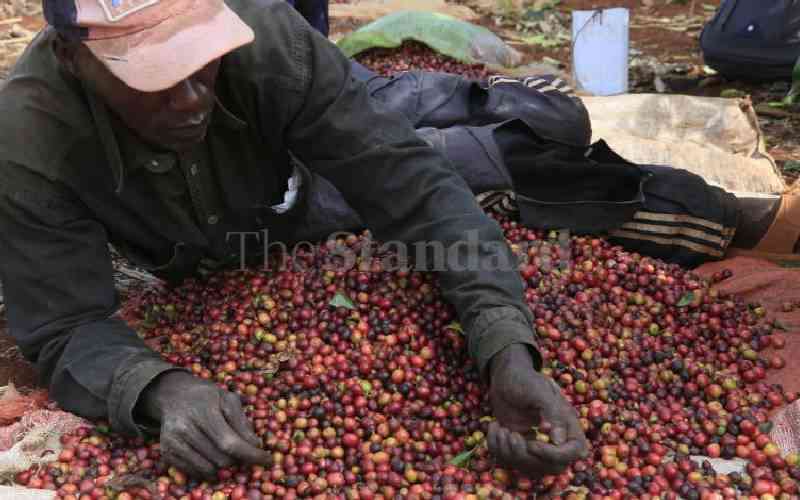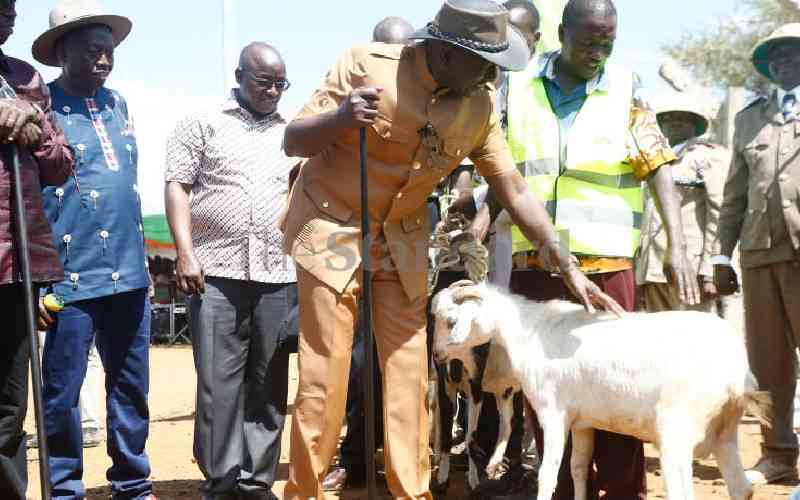Like a breastfeeding mother, a nursing cow has special diet needs and if they are not met, the animal will not perform its critical role of nourishing its new calf.
To begin, immediately before and after calving, your dairy animal requires lots of energy. This energy is critical in supporting the growing calf and in milk production.
When the animal is milked, a lot of calcium is taken out of the body into the milk and that is why a diet rich in energy foods is critical for the animal to replenish this.
Tricky milk disease
Whenever an animal loses calcium stock, it becomes too weak to walk or stand.
This is because calcium is important for muscle movements and the heart muscles need calcium to pump. The animal usually then falls down and cannot stand until treated.
The condition is known as milk fever. When a farmer notices this in an animal that calved recently, one must call a vet immediately.
This is because without treatment, the heart cannot sufficiently pump blood to the whole body and lack of calcium leads to paralysis, which can lead to death.
Treating the condition
Treating milk fever is a small miracle to farmers and animal health providers.
The affected animal is treated using a calcium solution which is injected into the vein and the animal gets up instantly after treatment and with good feeding may remain normal throughout the lactating period.
As usual, this treatment has to be done by a trained, qualified and registered individual. Why? The calcium solution has to be administered while monitoring the heart rate and only a qualified person can hack it.
Calcium and magnesium are also poisonous to the heart muscle when administered in high doses.
The animal, instead of being treated, could as well drop dead due to over dosage; maybe a farmer has experienced this with a quack.
Whenever the animal appears healthy and producing milk normally, the cow has to get optimum nutrition to continue with good milk production.
Stay informed. Subscribe to our newsletter
This can only be achieved if all nutrients are provided for. Energy is usually provided to these animals in the form of grains known as concentrates.
This is the class where the dairy meal used during milking belongs. They are always bought commercially while some large scale farmers produce their ratios at home.
Commercial concentrates are usually fortified with vitamins and calcium to cater for what is lost in milk.
For farmers with mixers, proportions of the raw materials can be provided so as to develop your own concentrates.
Concentrates are feeds of choice to these animals because they are highly digestible and produce the energy needed by the animals fast therefore improving milk production.
Challenge feeding
Whenever a farmer is able to provide sufficient concentrates to his animals, they can choose to practice challenge feeding.
This is because dairy nutritional science has shown that the more the concentrate an animal is fed, the more the milk production.
Challenge feeding therefore encourages farmers to continuously feed their animals with gradually increasing grain ratios to achieve optimum production.
This increase should be practiced until no more increase in milk production occurs with increase in concentrate quantity. Then the animal is maintained on the quantity that helped produce the highest amount of milk.
Challenges with feeding concentrates
When grains are fed to animals, they are broken in the rumen to produce organic acids.
If an animal feeds on high amounts of grains than the animal is used to, then the animal comes down with a condition known as ruminal acidosis.
This means that there is overproduction of acids that the animal’s body cannot cope with. This can lead to severe health complications and even death. This therefore calls for animals to be introduced to grains gradually.
Another complication that arises from feeding too much grain is lameness or laminitis. This is because acids produced end up affecting the hooves making them painful as the animal walks.
In cases where animals are fed on grains but at the right ratios, over time they grow very long hooves. Such hooves need to consistently be trimmed to prevent the animal from developing hoof conditions or lameness.
Every kind of grain fed to animals should be of good quality or should be animal grade to prevent complications such as aflatoxins in milk. Aflatoxins are a major cause of liver cancer.
[The writer is a researcher at Kenya Agricultural and Livestock Research Organisation. [email protected]]
 The Standard Group Plc is a
multi-media organization with investments in media platforms spanning newspaper
print operations, television, radio broadcasting, digital and online services. The
Standard Group is recognized as a leading multi-media house in Kenya with a key
influence in matters of national and international interest.
The Standard Group Plc is a
multi-media organization with investments in media platforms spanning newspaper
print operations, television, radio broadcasting, digital and online services. The
Standard Group is recognized as a leading multi-media house in Kenya with a key
influence in matters of national and international interest.
 The Standard Group Plc is a
multi-media organization with investments in media platforms spanning newspaper
print operations, television, radio broadcasting, digital and online services. The
Standard Group is recognized as a leading multi-media house in Kenya with a key
influence in matters of national and international interest.
The Standard Group Plc is a
multi-media organization with investments in media platforms spanning newspaper
print operations, television, radio broadcasting, digital and online services. The
Standard Group is recognized as a leading multi-media house in Kenya with a key
influence in matters of national and international interest.









